Remembering My Grandad, William George Fredrick Head
who I never had the privilege to meet.
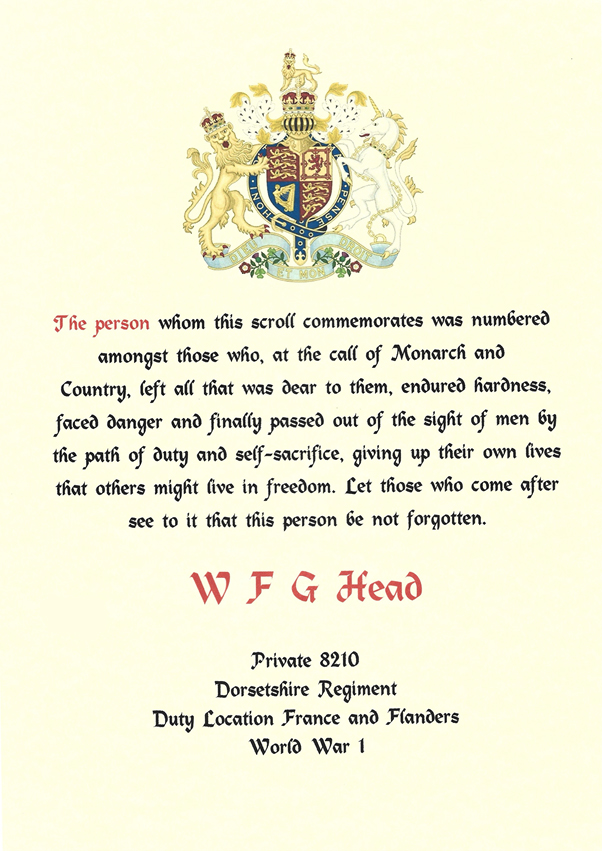
William Fredrick George Head was born in 1888 he joined the Dorsetshire regiment on the 3rd December 1906 aged 18 years, Service number 8210.
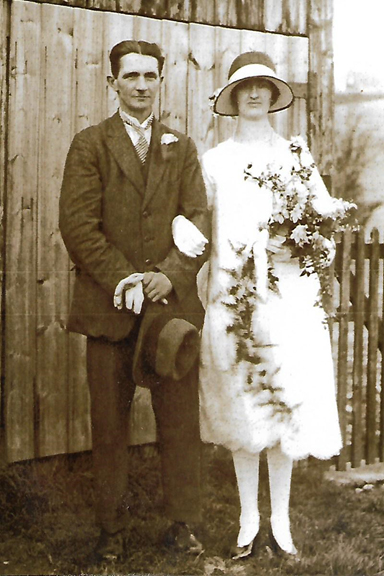
July 1888 William & Katie Nee Lampard
William had six siblings, Mary, Ethel, Gertrude, Elve, Reginald and Fred.
Fred and Reginald lie near William at Donhead St Andrew cemetery, William is buried with his wife and children, next to his Mother then Andrews, it is not known where Williams father, William Head who died in 1905 is laid to rest.
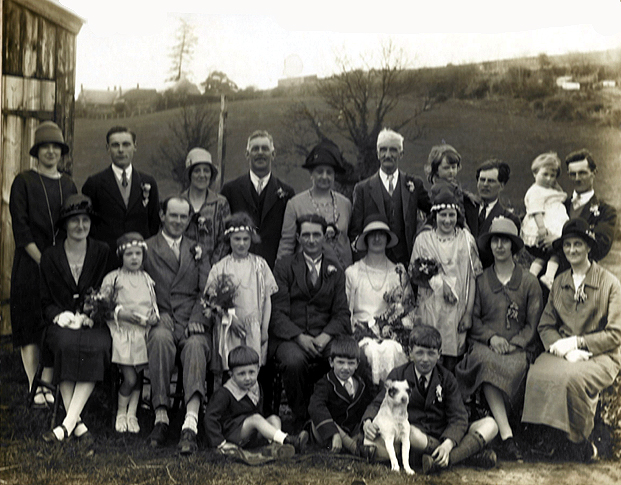
The wedding day family photo, we do not know the names of all of those present, if you do please let us know.
From Right to left;
Back row, ?, ?, ?, ?, Mum, Thirza Nee Biddiscombe, Husband Reginald Andrews, ?, ?, ?, ?.
Middle row, ?, /, /, /, William, Katie, ?, ?, ?.
Front Row, ?, ?, ?, and Dog?
William Fredrick George Head spent time in India at Poona, near where the Dorsetshire Badge is carved into the hillside.
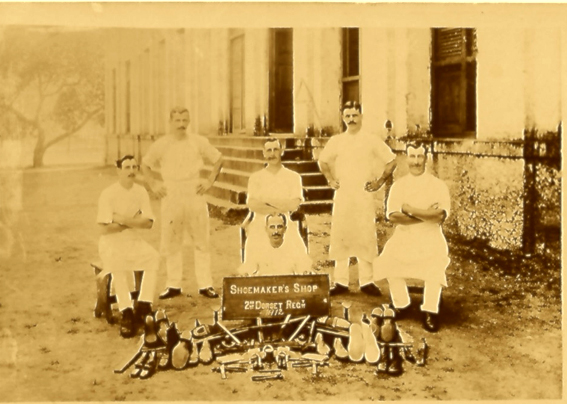
At their shoemakers shop Poona
During WW1 he served in August 1914 in Poona India part of the 16th India Brigade Poona Devision. On the 6th November 1914 he landed in Fao Persian Gulf for the campaign in Mesopotamia as part of the Indian Expeditionary Force D.
SAIHAN
On November 15th British Troops including the 2nd Dorset Battalion advanced further up the Tigris and confronted a 300 strong Turkish Forceat Saihan near Basra. With heavy rainfall and muddy conditions, progress was slow until the use of 18 pounder artillery succeded in forcing the enemy to retreat. Of the sixty British Casualties suffered, two thirds were 2nd Dorsets, giving a fair indication of their importance in the battle. On the 17th November, the British attacked a Turkish army of about 3000 troops at nearby Sahil where fierce fighting resulted in several casualties and ended in the capture of the Turkish Fort. The enemy troops fled, often using heat mirages as cover, and with the conditions being so muddy the British troops were unable to give chase. High winds caused several barges to break their moorings, with some sinking and others running aground. The resulting loss of rations forced the troops to kill and eat the the wounded Arab ponies that the Turkish forces had left behind. In this latest battle, the 2nd Dorsets again contributed disproportionately tp the 500 or so British casualties, with 22 killed and 149 wounded. It had only been two weeks since their arrival and they’d already had 25% of their force put out of action.
BATTLE OF SHAIBA
With the ongoing enemy threat during March, large numbers of British troops including the 2nd Dorsets, were required to sleep in a state of battle readiness, with many suffering from extreme cold at night when their tents were packed away in readiness for possible attack. On the 9th April and before the Turkish offensive had started, a new regional British Commander in Chief arrived at Basra to take command of extended operations. His name was Sir John Nixon, and he superseded General Barratt, who was suffering from ill-health. On April the 11th the Turks initiated their offensive with simultaneous preliminary bombardments of Shaiba and Quma. With heavy fighting, often in very hot weather, many of the British troops became very tired, a stalemated battle at Shaiba was eventually turned on April the 15th by an attack led by the 2nd Dorsets the ferocity of which led to a full Turkish retreat. By the battles end the British troops were exhausted and very nearly out of ammunition . As one officer reported.
“ I do not think I ever remember being so utterly weary, or having such a raging unquenchable thirst, it was appalling the amount of liquid we consumed, none of us could face our meal, our throats and mouths were to parched.”
The 2nd Dorsets had bourn a prominent part in the fighting and their casualties were proportionate, nearly 25% of their strength lost, with 15 officers wounded and 4 killed. Of the men 37 killed and 115 wounded. Only two other battalions lost more in proportion. No less than 7 DCM’s were awarded for gallantry. Shaiba has been selected as one of the ten ‘HONOURS’ to be bourn on the Kings Colour of the Regiment.
29th April 1916 Battalion captured at Kut-el-Amara. During the siege at Kut a composite battalion, composed of returned wounded and other details from the 2nd Dorsets and the 2nd Norfolks was formed at El Orah, it was called the “NORSETS” and was attached to the 21st Indian Brigade, 7th Indian Division. The NORSETS was broken up on 21st July 2016 and the 2nd Dorsets re-established. It transferred to the 9th Indian Brigade, 3rd Indian Division in January 1917 and moved to Egypt in April 1918.
William was wounded in France at Flanders on the 22nd April 1915 and entitled to wear a wounded stripe” as authorised under Army Order 204 of the 6th July 1916.
He was discharged on the31st March 1920.
On the 11th September 1939 he was called up to attend the enlistment into the National Defence Company, Dorsetshire Regiment at RAF Fuel Depot Wilton on the 14th September 1939, Army number D/21027.
He was discharged on the 10th February 1941 permanently unfit for service.
William died at the Westminster Memorial Hospital Shaftesbury on the the 8th January 1943 aged 54 years.


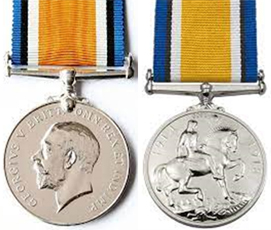

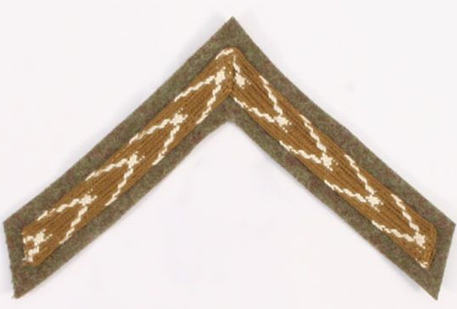

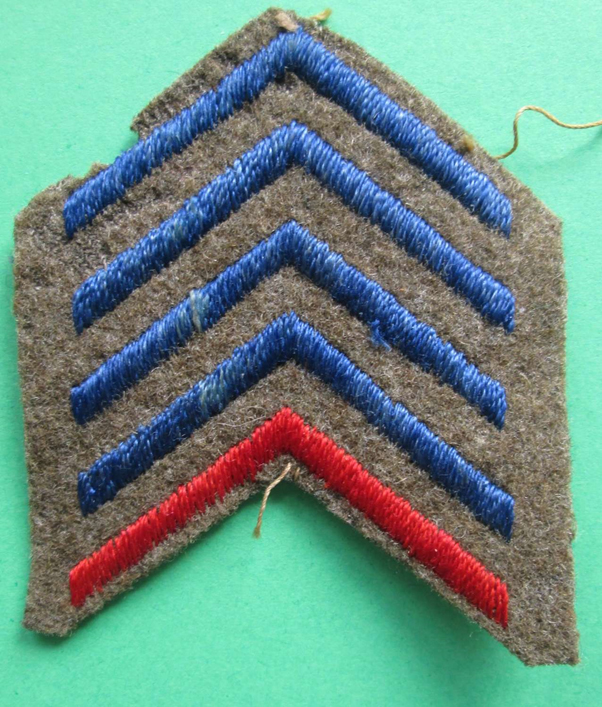 The Chevrons
The Chevrons
The Army Order stated “Chevrons of two colours – red and blue – have been approved. The first chevron, if earned on or before 31st December 1914, will be red; if earned on or after 1st January 1915, it will be blue; and all additional chevrons after the first will be blue”.
WW1 Papers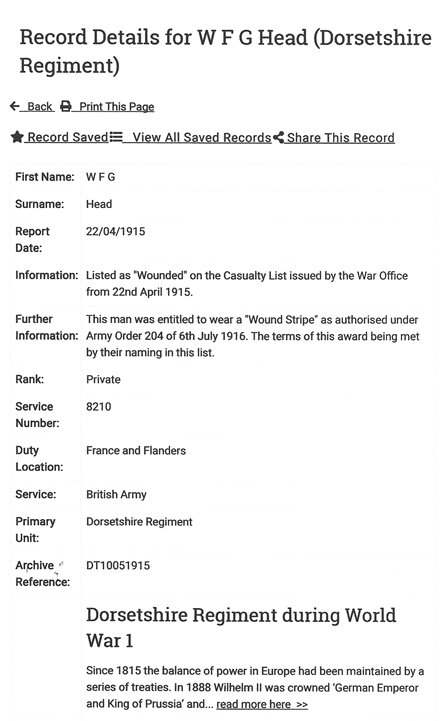
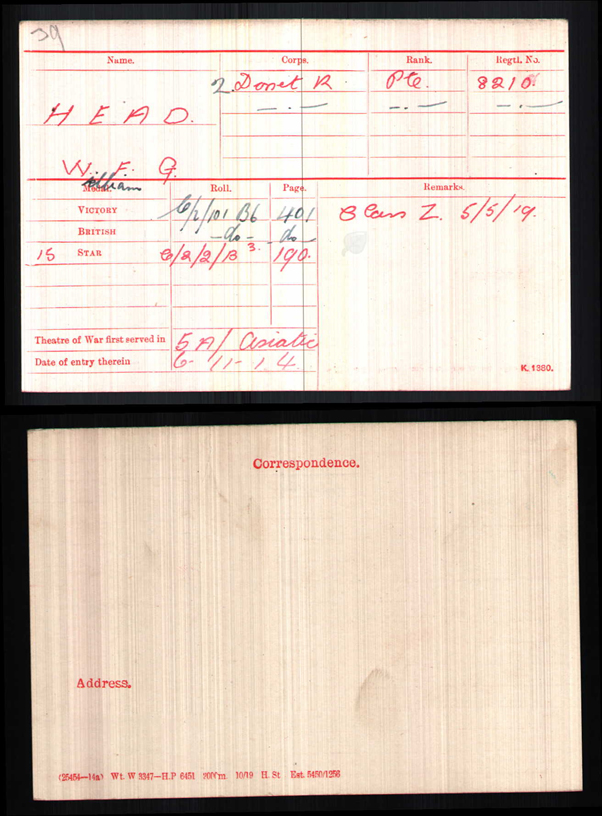
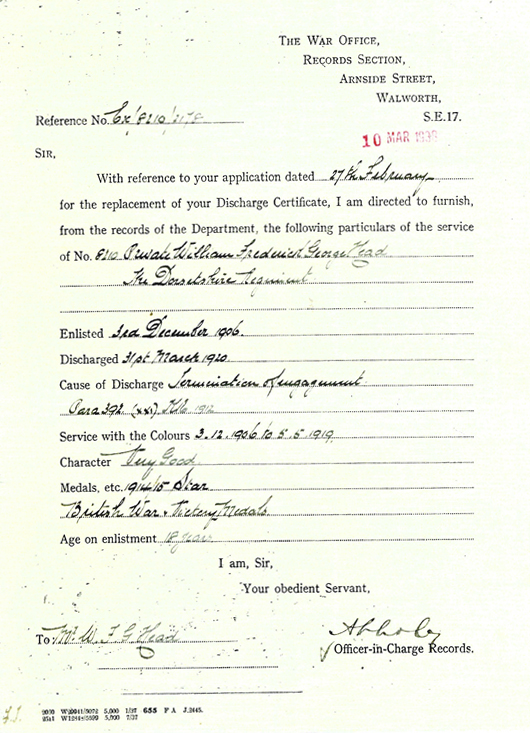
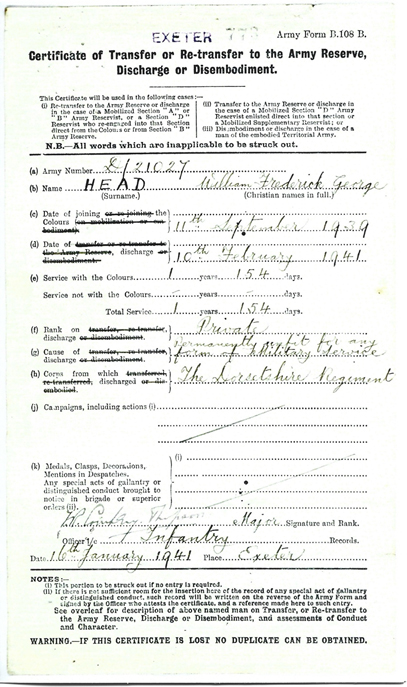
WW2 Papers
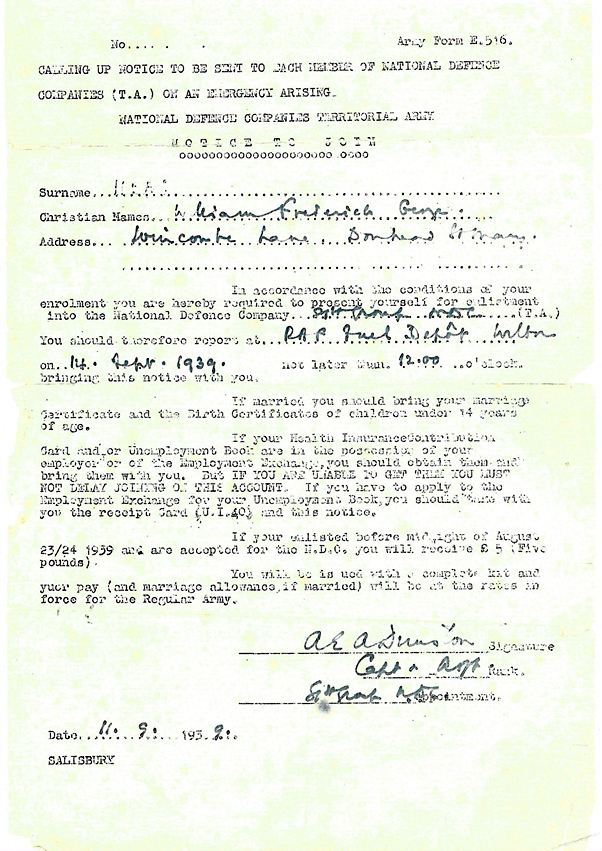
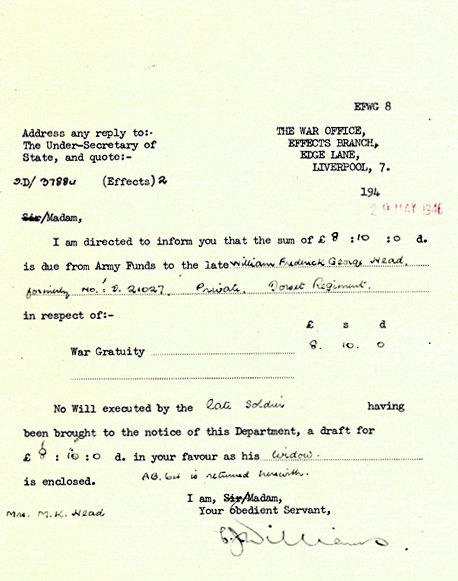
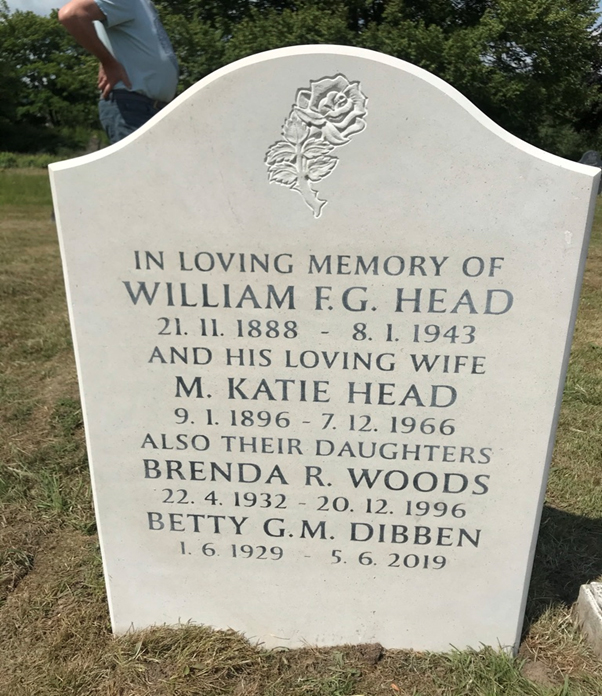
William lies in Donhead St Andrew Cemetery with his wife Katie and daughters Brenda & Betty, near the graves of two other family members and his Mother.
Family Photos - if anyone recognises them please get in touch and let us know.
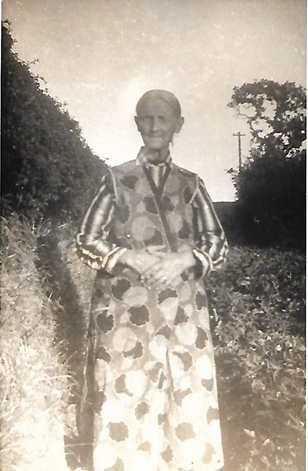
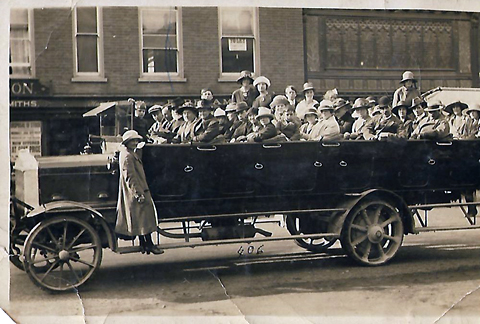
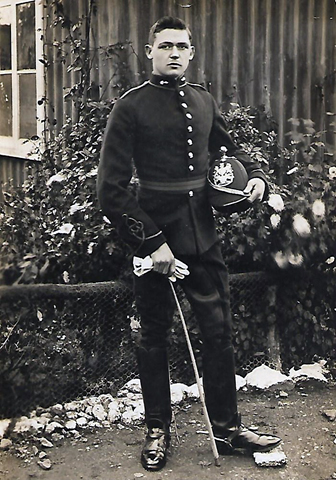
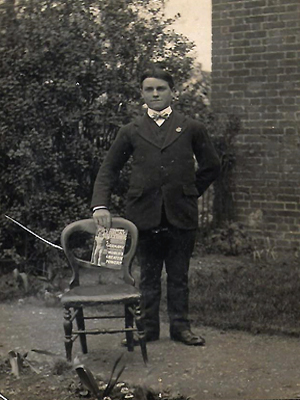
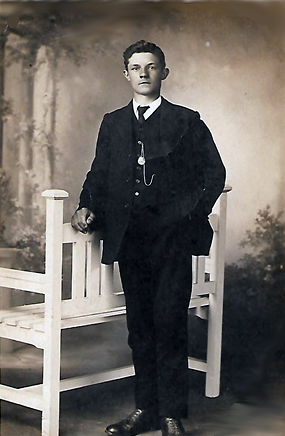
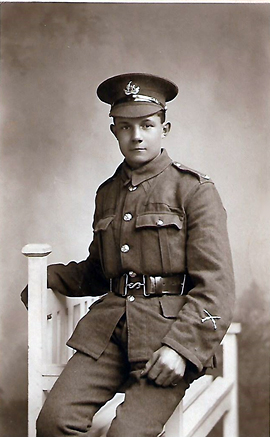
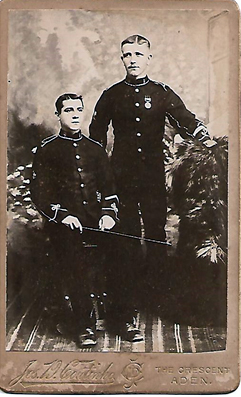

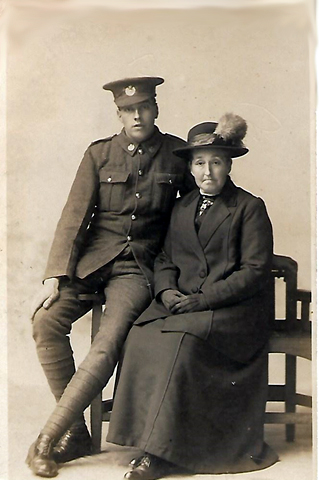
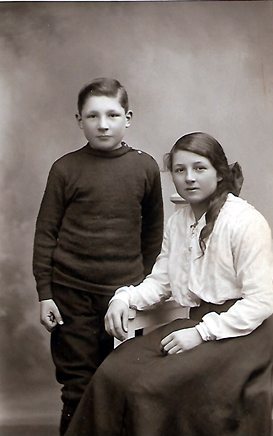
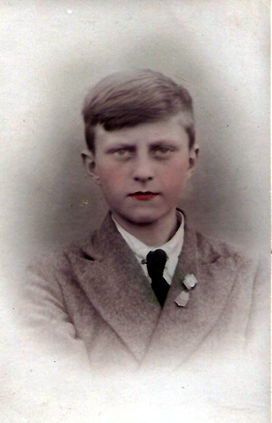


An overseas service chevron
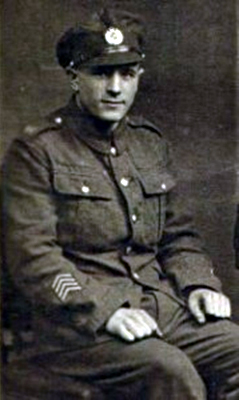 The photo shows small chevrons, pointing up towards the elbow, on the man’s right sleeve? You are looking at an “overseas service chevron”.
The photo shows small chevrons, pointing up towards the elbow, on the man’s right sleeve? You are looking at an “overseas service chevron”.
First authorised
The chevron was first authorised under Army Order 4 of 1918, which was published on 20 December 1917:
“His Majesty the King has been graciously pleased to approve of the award of chevrons to denote service overseas undertaken since 4th August 1914.”
Who was eligible?
The Army Order listed eligible categories of servicemen and women, who would wear the chevrons subjects to conditions shown below. The eligible categories were:
• Officers and soldiers of the Regular Army, Special Reserve and Territorial Force, and officers Naval ratings and Royal Marines of the Royal Naval Division;
• Officers, soldiers and followers of the Indian Army and Indian Army Reserve;
• Officers and soldiers of Oversea Forces;
• Native troops in East and West Africa;
• Members of Queen Alexandra’s Imperial Military Nursing Service, retired members of the Army Nursing Service, members of Queen Alexandra’s Military Nursing Service for India, the Territorial Force Nursing Service and Oversea Nursing Services;
• Members of the Women’s Army Auxiliary Corps;
• Civilians attached to British forces in an official capacity;
• Native Labour Corps;
• Chinese Labour Corps;
• Members of officially recognised Voluntary Aid Detachments;
• Personnel working under the Joint War Committee of the British Red Cross Society and the Order of St John of Jerusalem, and under the St Andrew’s Ambulance Association, if under the direct authority and supervision of the War Office;
• Personnel of the Women’s Legion employed under War Office authority.
How did a man or woman qualify?
The Army Order specified the conditions for qualification:
• the date for the award of the first chevron will be the date the individual left the United Kingdom in the case of those who proceeded from home; and the 5th August 1914 in the case of those serving abroad on that date. In the case of oversea troops the date of leaving their own country, or where employed in local operations, the date of crossing the frontier or that on which they commenced to take part in active operations.
• Additional chevrons will be awarded for each successive aggregate period of 12 months’ service outside the United Kingdom; the case of overseas troops, away from their own country or within a sphere of active operations.
• The qualifying service for additional chevrons need not be continuous. It will include periods of leave up to one month where the individual returns overseas at the conclusion of such leave.
• Periods of absence without leave, in prison or detention, in hospital due to sickness due to avoidable causes, or in captivity as a prisoner of war, will be excluded when calculating the twelve months required to qualify for an additional chevron.
• Draft conducting officers and others sent overseas on duty of a temporary nature … are not eligible for the award.